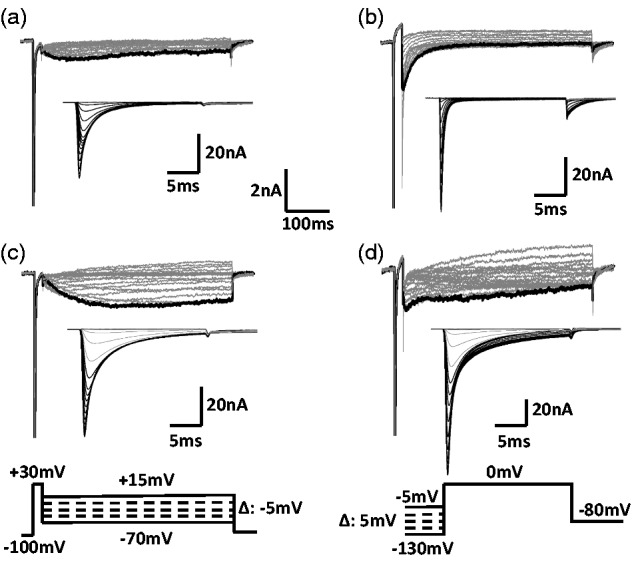Figure 1.

Expression pattern of resurgent currents in DRG neurons. Resurgent and regular sodium current were recorded from small (diameter: 20 to 30 µm) and medium (diameter: 35 to 45 µm) DRG neurons dissociated from adult rats. In all the small neurons, both fast (TTX-S) and slow (TTX-R) regular sodium currents were expressed (a, inset). However, only a slow (TTX-R) resurgent current was recorded from small DRG neurons. In the medium DRG neurons that expressed only fast (TTX-S) regular sodium currents ((b), inset), a fast (TTX-S) resurgent current was recorded (b). In the medium DRG neurons that expressed both fast (TTX-S) and slow (TTX-R) regular sodium currents ((c) and (d) insets), two types of expression pattern of resurgent currents were recorded. In the majority (>80%) of such neurons, a single slow (TTX-R) resurgent current was recorded (c). In other cells (<20%), both a fast (TTX-S) and a slow (TTX-R) components of resurgent currents were recorded (d). The voltage protocol for recording resurgent currents (Bottom, left) includes a series of repolarization voltage steps (+15 to −70 mV decreased by 5-mV steps, 450 ms) from a depolarization step (−100 mV to +30 mV, 20 ms). The regular sodium currents were recorded using a standard steady-state inactivation protocol that depolarized neurons to 0 mV after 500 ms pre-holding at −130 to −5 mV with an increment of 5 mV (Bottom, right). Scales for the regular sodium currents: horizontal scale, 5 ms; vertical scale, 20 nA.
